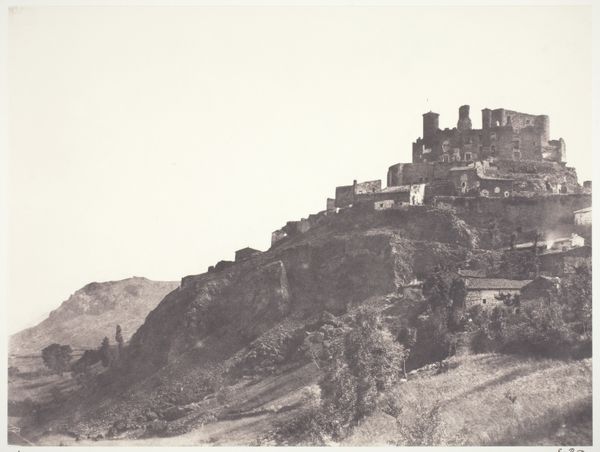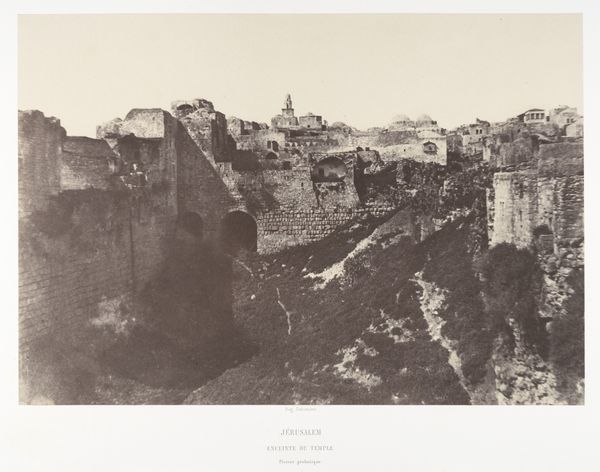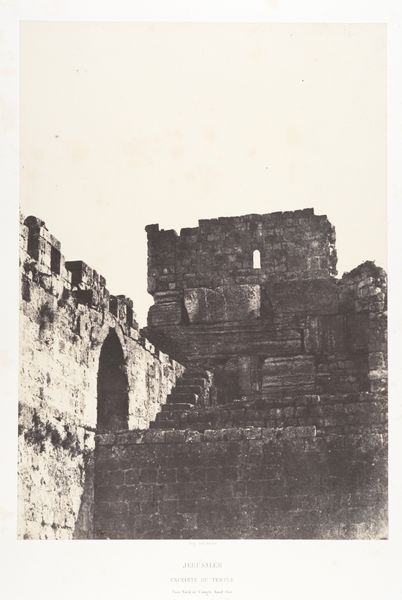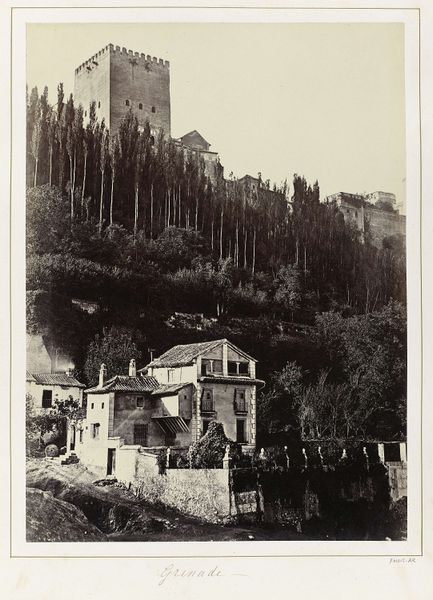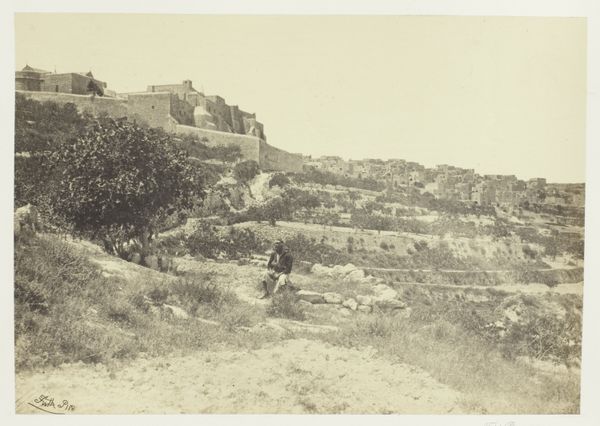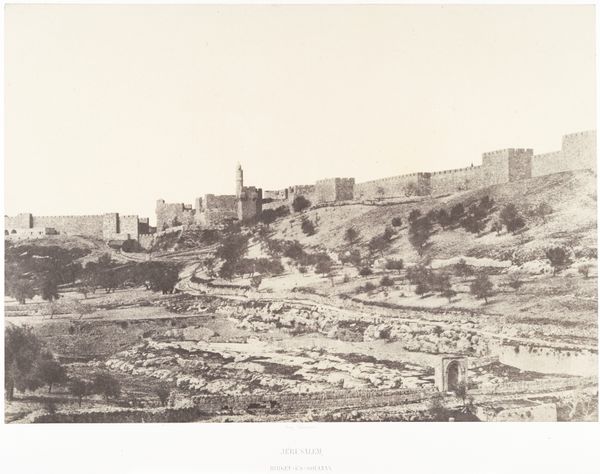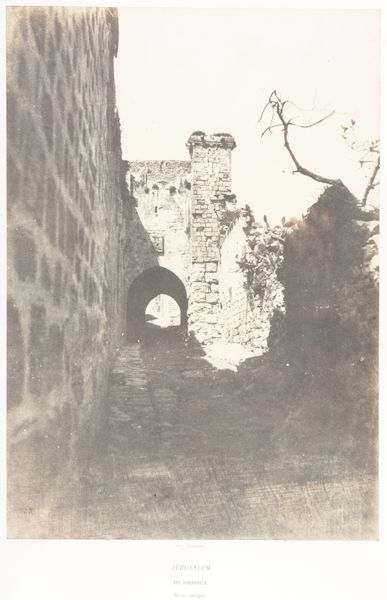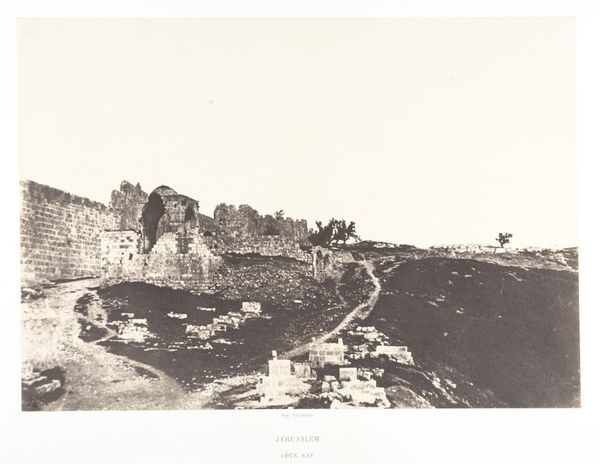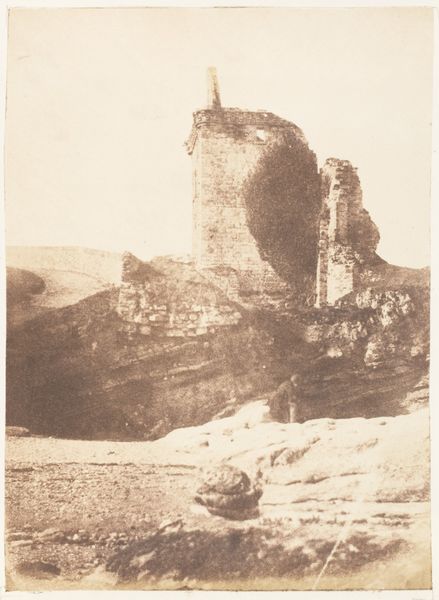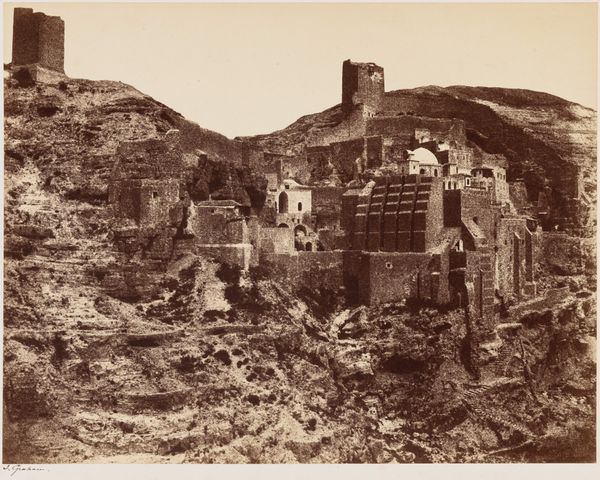
Jérusalem, Forteresse de David (citadelle), Face Ouest 1854 - 1859
0:00
0:00
print, photography, site-specific, albumen-print, architecture
# print
#
landscape
#
photography
#
orientalism
#
site-specific
#
cityscape
#
albumen-print
#
architecture
Dimensions: Image: 32.6 x 23.7 cm (12 13/16 x 9 5/16 in.) Mount: 44.4 x 59.5 cm (17 1/2 x 23 7/16 in.)
Copyright: Public Domain
Editor: Here we have Auguste Salzmann's "Jerusalem, Fortress of David (Citadelle), Face Ouest," created between 1854 and 1859. It's an albumen print, a very early form of photography. It gives me this wistful feeling, like looking at a scene from a history book. What strikes you most about it? Curator: It's fascinating, isn't it? I'm immediately drawn to how Salzmann uses the light, almost like a painter. It bathes the scene in this ethereal glow, lending a timeless quality to those formidable stone walls. Makes you wonder about all the eyes that have looked out from them, doesn't it? Editor: Absolutely. The architecture is amazing, but the light almost softens it. Curator: Exactly. Now, consider the date. The mid-19th century saw a surge in "Orientalist" art. Salzmann's work, though photographic, participates in that dialogue, that European gaze upon the Middle East. But it differs from exotic fantasies, don’t you think? It seems more sober, focused, factual. Or does it? What do *you* think? Editor: Well, it does feel… objective. Like a document, more so than a romantic painting. Maybe even…sterile? Curator: Sterile... A potent word! But doesn’t that, perhaps, make it even *more* fascinating, especially given its time? A different mode for that Orientalist lens. It captures a specific moment, a fixed perspective, yet hints at the myriad untold stories hidden within those walls. Editor: It's given me a lot to think about in terms of photography's role in documenting history...and shaping perspectives. Curator: Me too. It shows how much we can find in even the most "straightforward" image, and how that image is always… incomplete, wanting more voices.
Comments
No comments
Be the first to comment and join the conversation on the ultimate creative platform.

